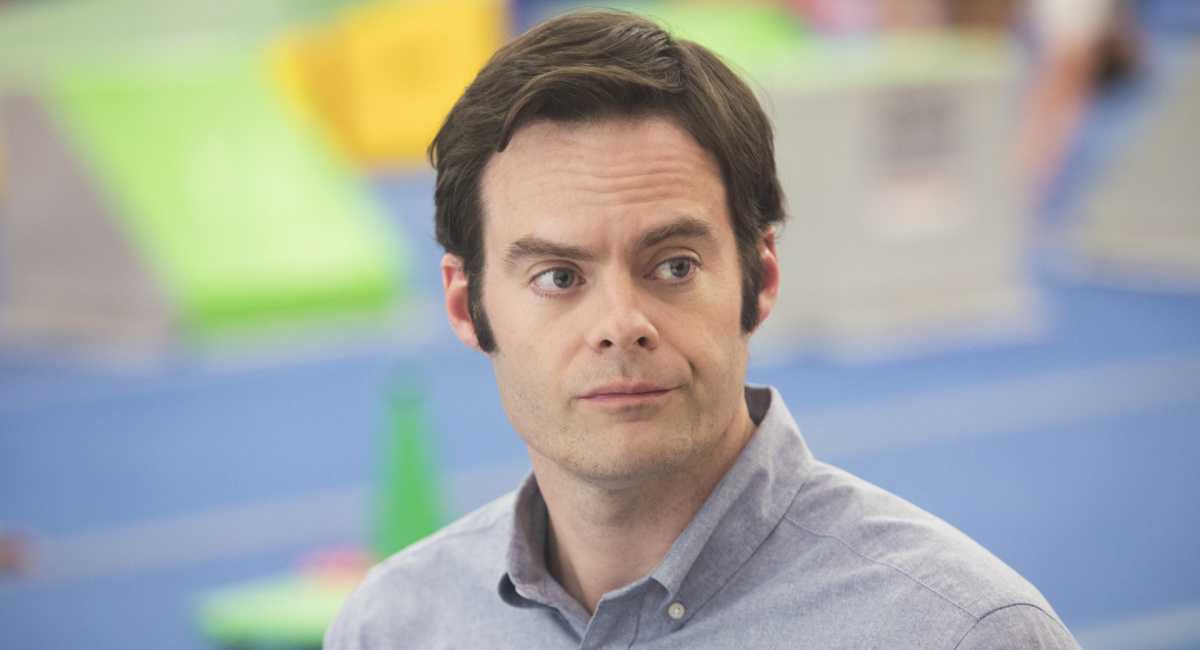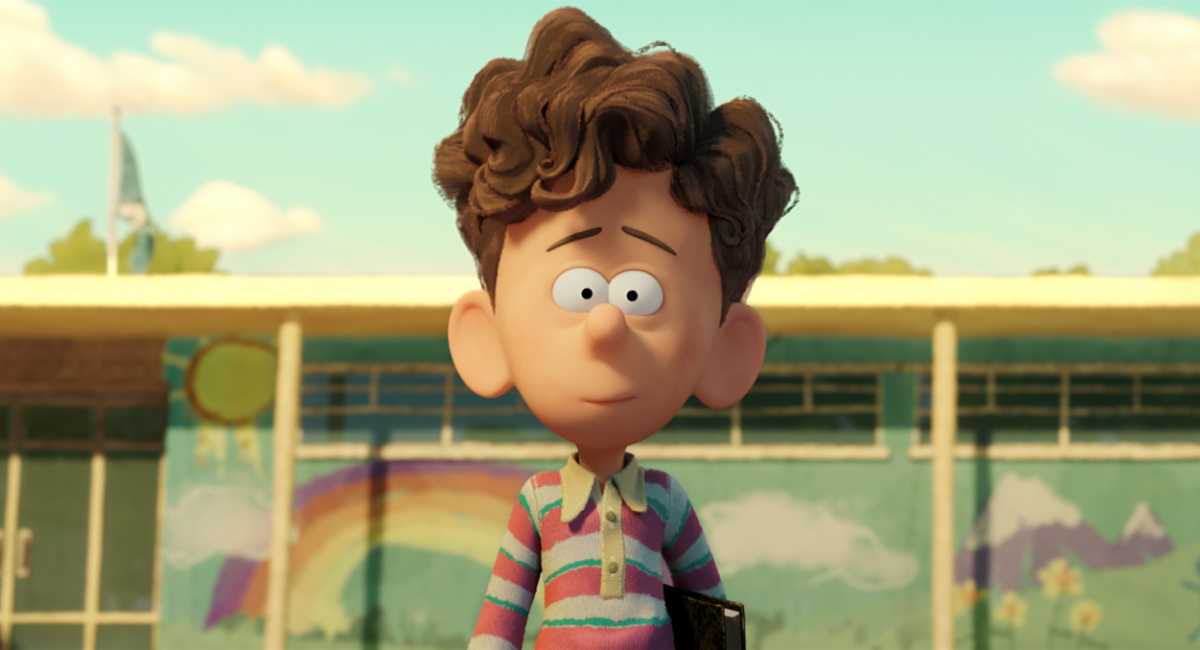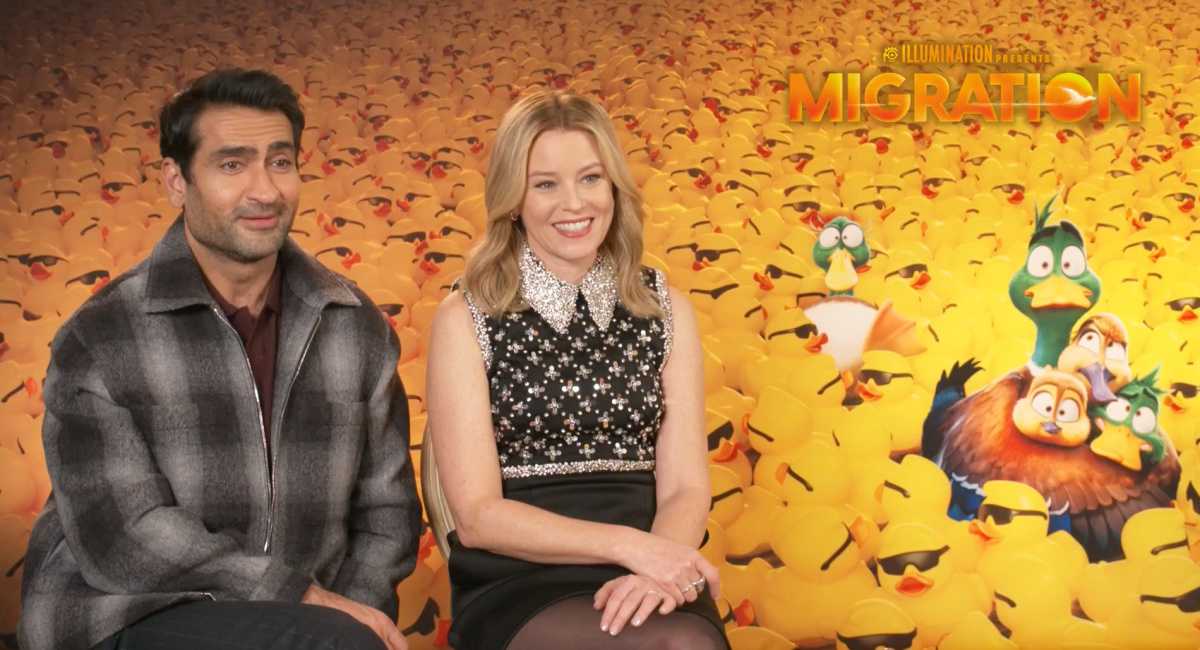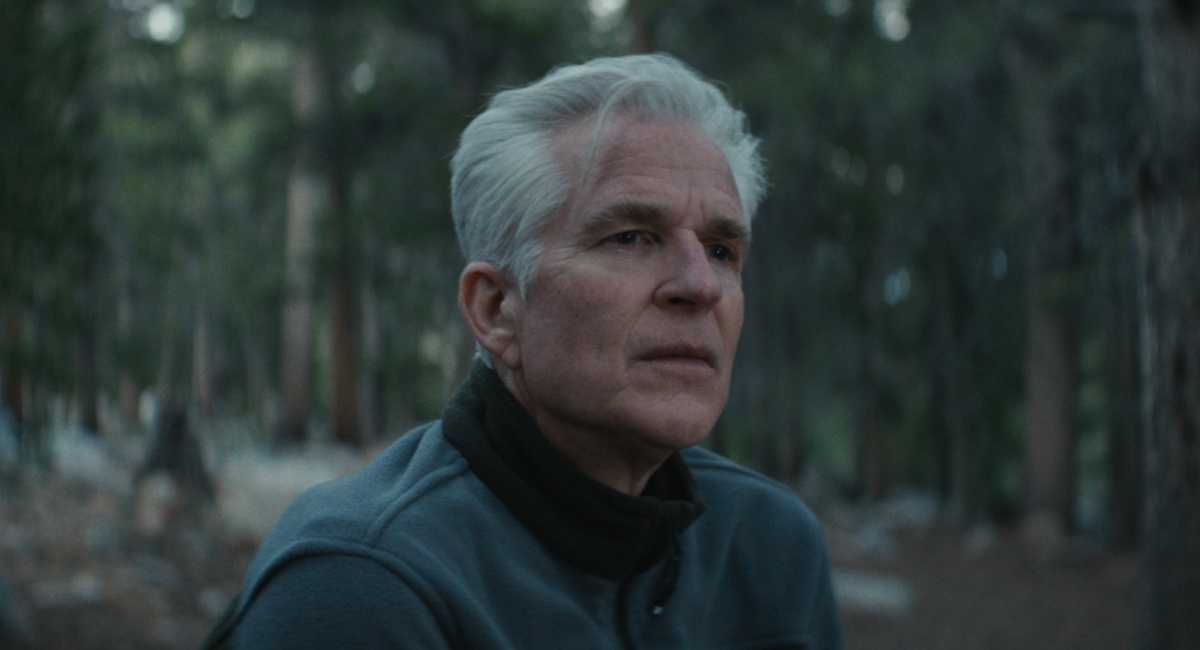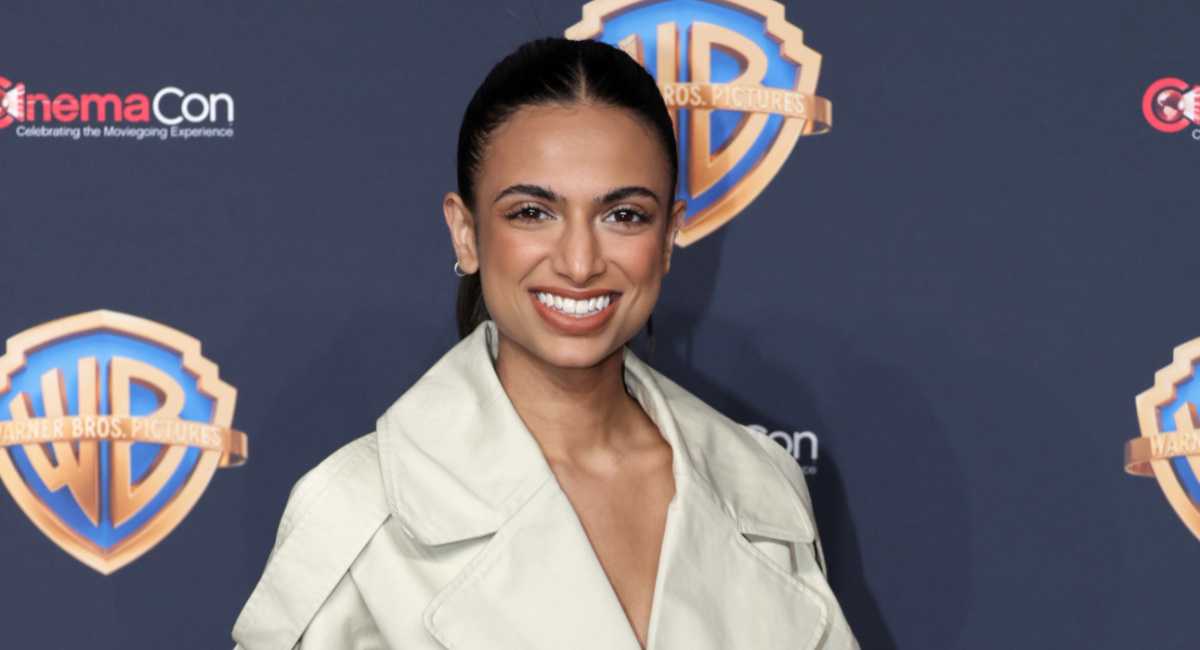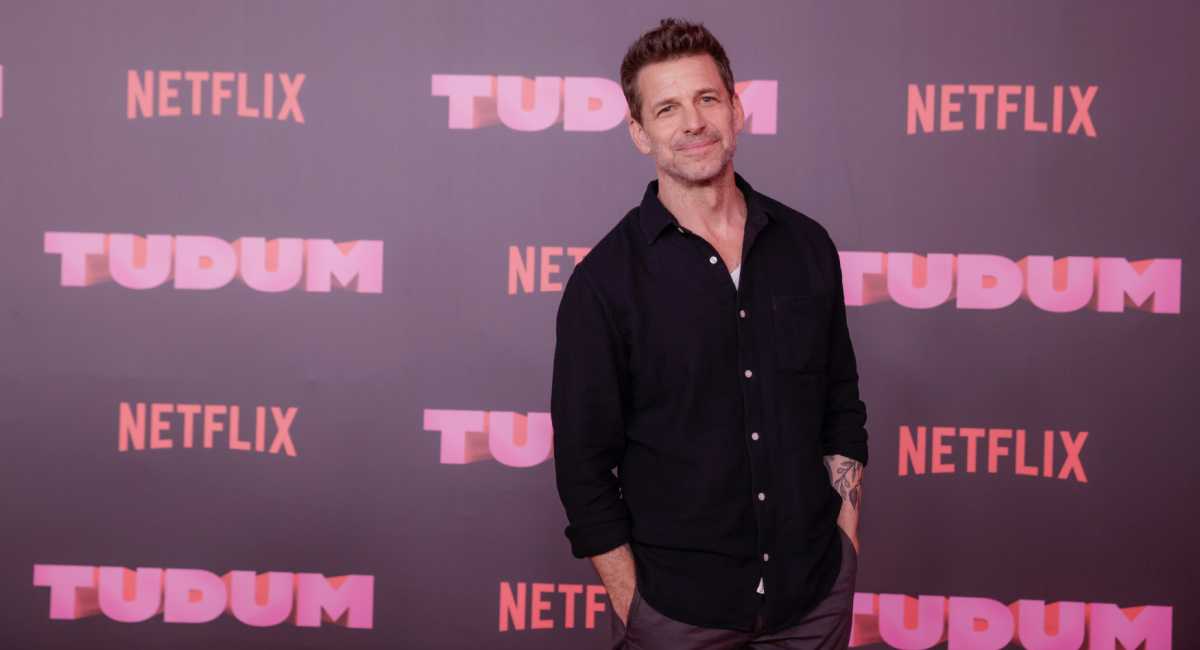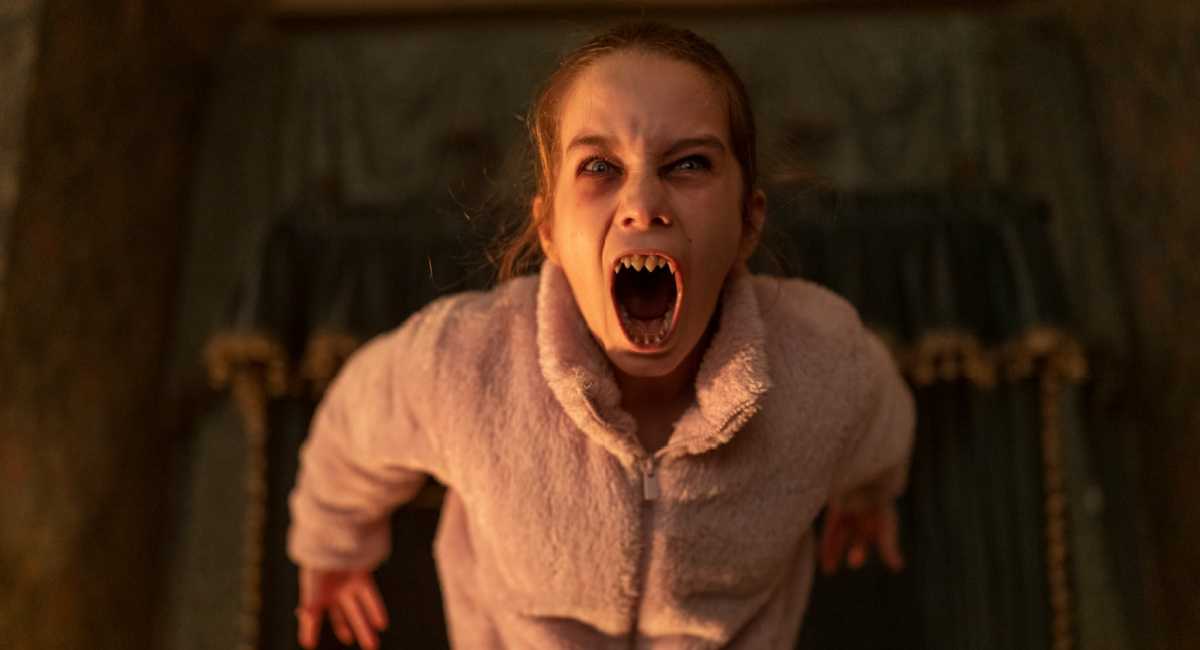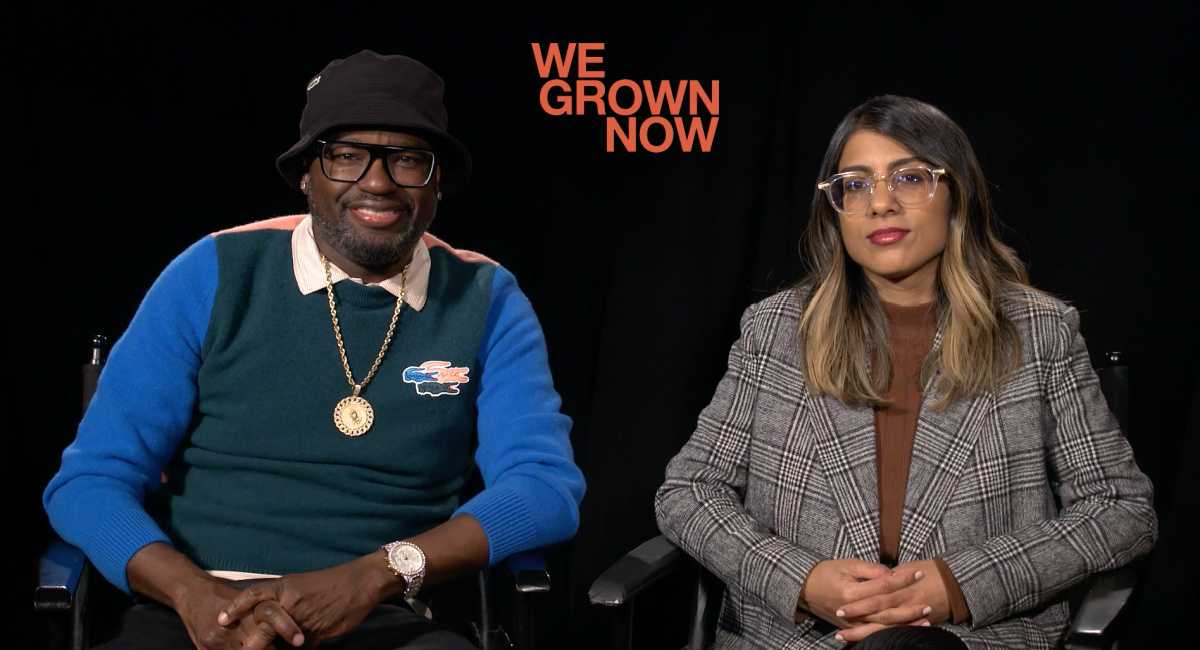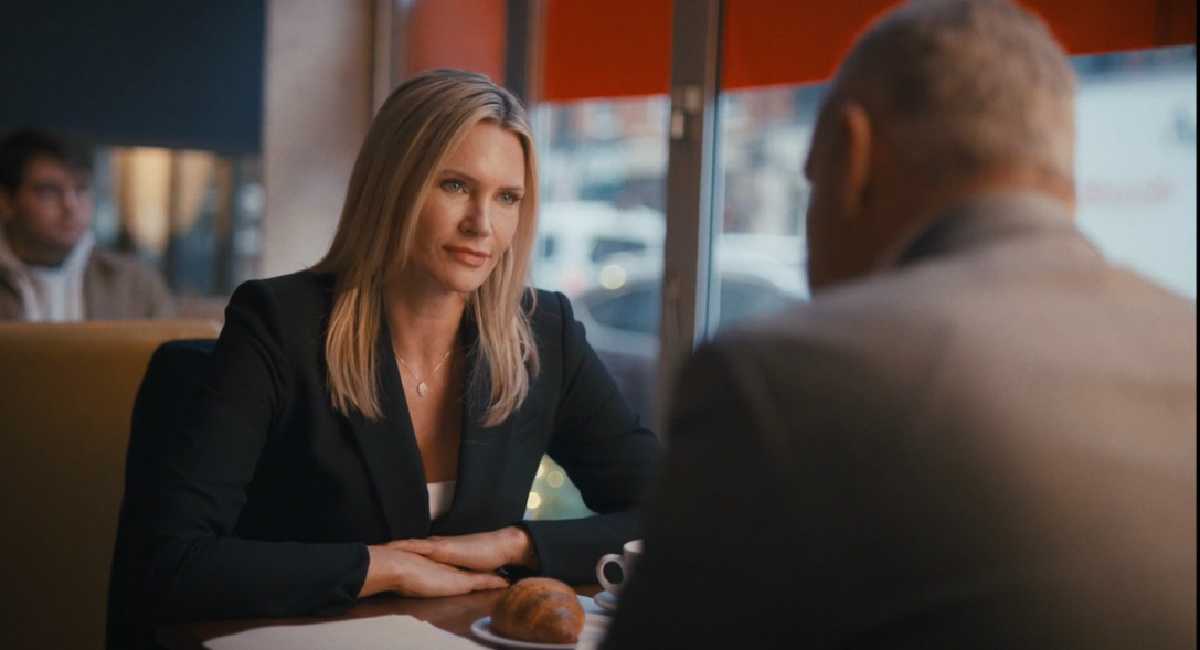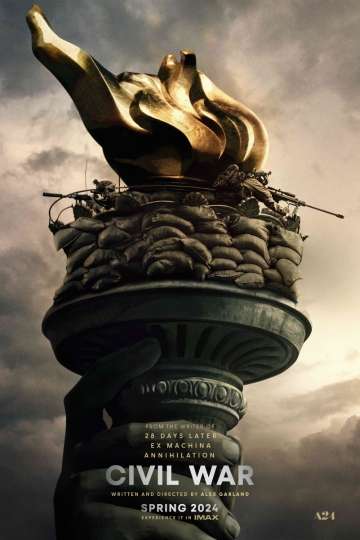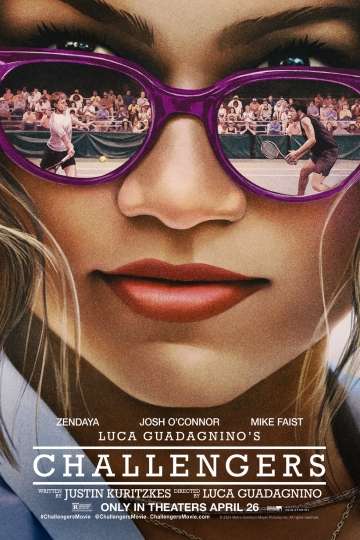Here's Why 'Hotel Transylvania 3's' Genndy Tartakovsky Is Hollywood's Greatest Secret Weapon
The path to "Hotel Transylvania" was a long and winding one, full of dead ends, potholes, and false starts.
The project was first bought by Sony Pictures after an elaborate pitch was presented that outlined several films, as well as merchandise opportunities, theme park concepts, and television spin-offs. The project's originator, comedian Todd Durham, would gain notoriety for inspiring the Lord Buckethead character, a comical riff on Darth Vader. Buckethead would go on to oppose leading British political candidates, beginning with Margaret Thatcher in 1987, John Major in 1992, and, most recently, Theresa May. (The character appeared in a 1984 no-budget "Star Wars" spoof called "Hyperspace," directed by Durham. In England, it's known as "Gremloids." Lord Buckethead, in his political maneuverings, is part of the Gremloid Party.)
Following the sale of the concept, it went through five directors (Anthony Stacchi and David Feiss were replaced by Jill Culton, who was replaced by Chris Jenkins and then Todd Wilderman.) Finally, in 2011, Genndy Tartakovsky, best known for his traditionally animated cable series (the Los Angeles Times called him "The cartooning equivalent of a live-action TV auteur like 'Mad Men' creator Matt Weiner"), took over. By the time he'd signed on, the project had been in development for six years. Tartakovsky described the atmosphere, when he finally took over, as "bitter."
Since the film premiered at the Toronto International Film Festival on September 8, 2012, it would wind up making $358 million worldwide. Its sequel would make $473 million worldwide. There's an animated series currently airing on Disney Channel. And the third film, "Hotel Transylvania 3: Summer Vacation," opens this week.
The new film's creative strength (it's the franchise's best movie by far) and its commercial appeal (it made $1.3 million from an Amazon Prime sneak peek alone) cements Tartakovsky as one of Hollywood's best, most unsung genius. After all, he did something that teams of the industry's brightest couldn’t; he turned a pie-in-the-sky pitch packet into a half-a-billion-dollar franchise.
If you know Tartakovsky, it's probably from one of his television shows. Early in his career, he created "Dexter's Laboratory," a quirky comedy that ran from 1997 to 2003 on Cartoon Network. He was also deeply involved in early, influential seasons of "The Powerpuff Girls."
But his magnum opus was "Samurai Jack," also created for Cartoon Network, which ran from 2001 to 2004. It elegantly combined influences, from Hayao Miyazaki to Sergio Leone, and effortlessly weaved in surrealistic flourishes and Eastern storytelling into an ambitious narrative about a displaced samurai who is separated from his family and flung through the far reaches of space and time by a vengeful spirit. (More on this in a minute.)
It was "Samurai Jack" that got the attention of George Lucas, who tasked Tartakovsky with creating a micro-series of "Star Wars" shorts set in between the events of "Attack of the Clones" and "Revenge of the Sith." (The first season consisted of 20 episodes that were only two or three minutes long; the follow-up season was comprised of five fifteen-minute episodes.) These episodes were brilliant. They were arguably the greatest thing to come out of the entire prequel period; each one crackles with energy and inventiveness. And for a while, at least, Lucas was grooming Tartakovsky to take over animation at Lucasfilm.
"Basically after the second 'Clone Wars,' Jim Morris -- who was running ILM at the time -- said, 'George wants to make this a bigger studio and wants to bring you on as a John Lasseter-type.' So I was like, 'Yeah!'" Tartakovsky explained. "I said, 'I want to do movies. I'll supervise the TV shows.' But I knew 'Star Wars' could be my life for the next 20 years and I didn't want to do that." His terms were simple: He'd oversee the TV shows and "do whatever for the studio and the company," but he wanted to make an original feature.
Things got far. Tartakovsky said: "We worked out a contract, my wife started looking for houses, and I had one more lunch -- like, the final lunch with George and Jim. We walked in and started talking and, all of a sudden, George goes: 'I don't want to do features. I just want to do TV. TV is the future.' I said, 'What?' And Jim was just as surprised." Quickly, he realized his life would be stuck in a galaxy far, far away.
He told Morris, "I can't move my whole family just to do 'Star Wars.'" Lucas thought that an original animated feature was too "risky." The entire process left Tartakovsky "heartbroken." (I got out of him that the feature would have involved Vikings, and he is quick to point out that this was before "How to Train Your Dragon.")
Adding insult to injury was that, following his exit from Lucasfilm, Lucas effectively scrubbed the canon clean of his contributions on the "Clone Wars" micro-series. "I don't think it was a personal vendetta," Tartakovsky said. "It was basically that they were going to do 'Clone Wars.' They used all of our designs as the beginning of all that. They brought in a different crew. They wanted to own it. And this 'Clone Wars' was the definitive 'Clone Wars.' All that stuff that we did that was canon, that was part of the library and all of that stuff, got wiped out. They didn't own it and they just tried to sweep it under the carpet."
Currently, there isn't even an HD version of the series that you can (legally) purchase. When I asked if the new Lucasfilm regime, led by Kathleen Kennedy, had reached out, he flatly said, "No."
(Similarly, Genndy told me that his proposed "Dark Crystal" sequel, "The Power of the Dark Crystal," originally announced by the Henson Company in 2006, stalled because of budget issues. The film would have been an "arty action puppet movie," according to Tartakovsky.)
Still, the influence of "Clone Wars" endured. When Tartakovsky met with Kevin Feige in 2009, it was "to try and sell him on doing animated Marvel characters. Like what we did on 'Clone Wars,' do that for Marvel." The conversation pivoted. "[Feige] started pitching me to direct 'Thor,'" Tartakovsky recounts, still sounding amazed. As it turns out, that wasn't quite what Feige wanted. But he did want to tell Tartakovsky how much of an impact he'd made on the birth of the Marvel Cinematic Universe (and, by extension, the next ten years of superhero cinema).
"We started talking about Jon [Favreau] and how, in the first 'Iron Man,' he would look at 'Samurai Jack' and 'Clone Wars' as inspiration for the action. Feige asked if I wanted to meet with him, and I did," Tartakovsky said. "So I met with Jon and, basically, he said my sensibilities are very much what he is trying to do with 'Iron Man.' And he didn't know how it would work, but he asked if I would be interested in helping him with 'Iron Man 2.'"
Tartakovsky's help was instrumental in shaping the last third of the movie, particularly in the sequence where Iron Man and War Machine face off against various villains in a Japanese garden. Tartakovsky shot second unit and storyboarded the entire sequence, including shooting bits and cutting the entire thing together. The reason he cut it together is that so much of the power of his animated work comes from the rhythm of it.
"I said, 'A lot of the stuff I do, it's the timing and the pacing and the sensibilities, that really sells it.' I showed him this whole thing. He liked it and I left," Tartakovsky said. When he returned for a screening of the rough cut, he was in for a rude awakening; "everything was changed and it didn't work as well." Still, he was respectful: "I said, 'Listen, you gotta do what you gotta do, but I don't think it works as well.' Then, when I saw the final cut, that one chunk was pretty much exactly how we did it, with the laser and the 360 and all the guys coming down. It was shot-for-shot." Excelsior!
A year after "Iron Man 2," he began work on "Hotel Transylvania," a typically exaggerated comedic take on a hotel beloved by all your favorite movie monsters (led by Adam Sandler's Dracula). The rest is history. Sort of.
After the surprise success of the first film, he was swept into making the sequel. By all accounts, this was a difficult creative process, with Tartakovsky clashing loudly with the movie's Sandler-appointed screenwriter (and frequent creative partner) Robert Smigel.
There were rumblings of difficulties between the two during the press tour for the film and those were amplified by emails uncovered during the Sony hack. It was a less-than-ideal experience. When the movie came out in 2015, Tartakovsky was adamant that he wouldn't return for the third film.
The official story is that Tartakovsky went on a cruise with his family and he was so inspired by the comedic possibilities of the monsters on a cruise ship that he simply had to return. And while that certainly played a part, it's far from the story.
"They were persistent at trying to get me back to do the third one. And I was very resistant. But the story idea helped to get there and also I said, 'I think it'll help if I get to write it,'" Tartakovsky explained. "Because there's a thing about having the luck in my career where I was able to create a lot of stuff, I know how to tell a story differently. It's from an animator's point-of-view, so it's more visually structured than a live-action type of scenario. And I think that's one of the reasons my stuff has worked -- I come at it from a different angle, a more visual angle. So when they agreed to have me write it with Michael McCullers, it was the sealing deal in being able to do the third one." And it's true; this installment feels more authentically Genndy.
When I pressed him to elaborate on the differences between himself and Smigel, he was typically democratic. "You have two creative people and I am very confident in what I do and very bullish, because it's worked for me. Having this experience in animation, I want to do it this way. Of course, Robert and Adam are super successful and super funny and they want to do it that way. Who knows what's right or wrong, but it makes things difficult," he said.
Another factor that allowed him to sign onto "Hotel Transylvania 3:" the return of "Samurai Jack."
The property spent years languishing in a kind of in-between realm. He had paused the show to concentrate on "Clone Wars," and simply never returned to it. (At one point, J.J. Abrams' Bad Robot had acquired the rights.) After years of silence, an announcement in 2015 (shortly after the release of "Hotel Transylvania 2") was made that the show was indeed returning -- and it finally made the air last year, airing ten episodes in the spring of 2017.
Watching the new series, which aired in the more mature Adult Swim nighttime programming block, you could feel Tartakovsky's unbridled creativity splashing across every frame. It was, stylistically and, from a storytelling standpoint, one of the strongest series of last year and probably the second-greatest TV reboot to air in 2017 ("Twin Peaks: The Return," we got you).
"Everywhere I went, to do press or lectures or any events, the first question is always: Is it a Samurai Jack movie? Are you going to finish the series? I was sitting in my bathroom and thought, I'm literally doing nothing right now. I was seeing what was going to happen. This was before the cruise [that would inspire the third film]. I figured I'd just put it out in the ether and I called up Cartoon Network and I got a response right away," Tartakovsky explained, about his return to the series. "That was it. Within two weeks the deal was done and I started writing."
Halfway through working on "Samurai Jack," he started writing "Hotel Transylvania 3," a movie that Tartakovsky says is "bigger and more fun" than the others. (This was, in part, due to the "refreshing" experience of making "Samurai Jack" again.) In particular, the filmmaker is proud of "Hotel Transylvania 3's" finale, which features a giant Kraken having a dance-off with our heroic monsters (it's really something).
"For a little while, it felt like too much. Like we're going to scare kids," Tartakovsky admitted. "But it felt like it was what I should be doing, really pushing the envelope. I try as much as I can. There are certain sensibilities that I can't escape."
And now that he's done with his ghoulish trilogy, what's next for the filmmaker who has been subtly shifting Hollywood sensibilities without anyone ever noticing? After his "Popeye" project stalled and his original script "Can You Imagine?" petered out, he says he's intent on trying new things.
First up is another TV show ("In today's market, there's so much original content being created, there's no reason for somebody like me -- who got their bones doing my own stuff -- that I shouldn't be doing my own show"), rumored to be called "Primal" after Cartoon Network filed some copyrights earlier this month. And then -- finally! -- an original animated movie for Sony. (In those same email hacks, it was revealed that Tartakovsky was the only filmmaker at Sony who the animators really responded to.)
"I could do these family films forever and I'll pay my mortgage and it's fine," Tartakovsky said pragmatically. "But I want to push animation. I love it. My relationship with Sony is good. They want me to stay on. So, I'm writing a movie for them." Later, he described the movie as "a big, original, action thing." He also noted that Sony Animation "knows what they're getting into."
But will Tartakovsky ever make the jump to live action? He says he's been offered projects, but refused to name specifics. He said that he's intrigued and may one day write his own, but that animation is his "true love." "I had this one live-action meeting and the guy said, 'So you're finally ready to graduate?' And I was like, 'No!' Stuff like that bothers me to the core," Tartakovsky said, bristling. "I'm very competitive and I'm very driven."
We can't wait to see what he does next.

Hotel Transylvania 3: Summer Vacation
Dracula, Mavis, Johnny and the rest of the Drac Pack take a vacation on a luxury Monster Cruise Ship, where Dracula falls in love with the ship’s captain, Ericka,... Read the Plot


